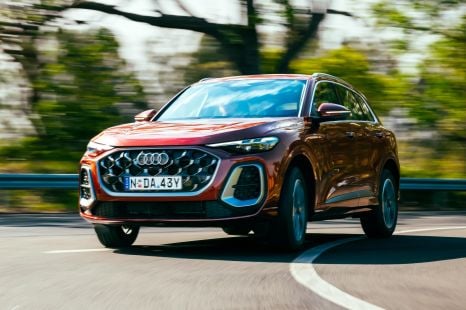

James Wong
2026 Audi Q5 review: Quick drive
5 Days Ago
The Jaecoo J8 large SUV shapes as a spacious, luxurious alternative to similarly priced mid-size models from legacy brands.
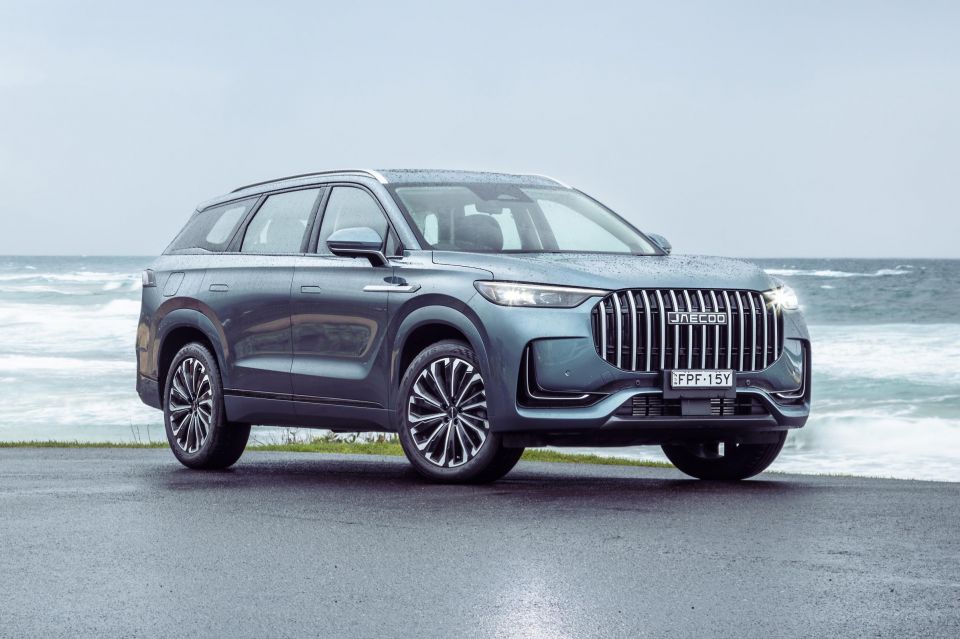
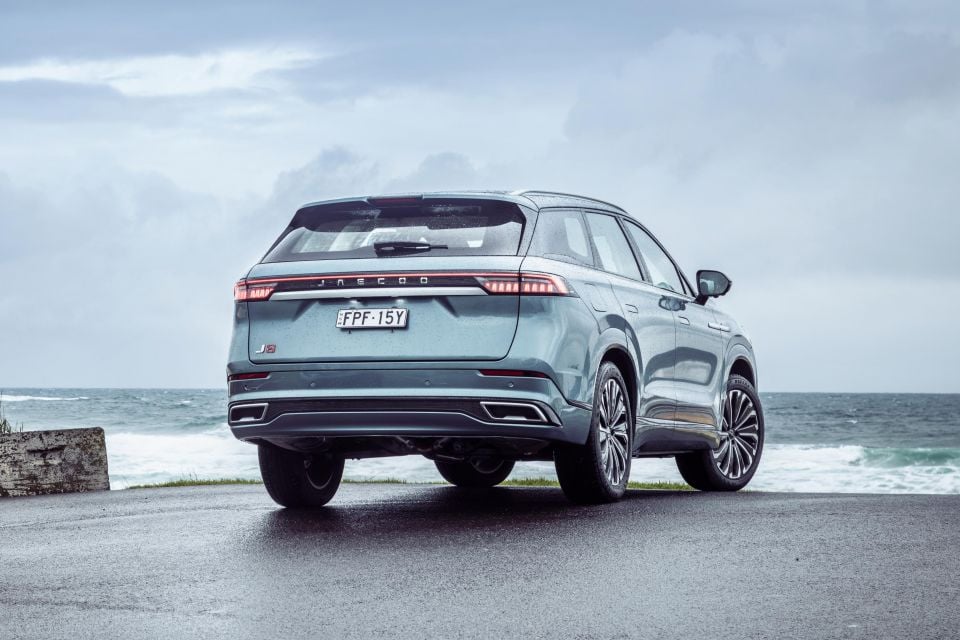

Quickly see how this car stacks up against its competition. Select any benchmark to see more details.
Where expert car reviews meet expert car buying – CarExpert gives you trusted advice, personalised service and real savings on your next new car.
It can be hard keeping track of all the new brands coming to Australia, almost all of them coming from China… and many coming from one automaker in particular.

That would be Chery, China’s largest vehicle exporter, which re-entered Australia in 2023 with a factory-backed distribution operation.
This year, it’s rolling out two brand names, but what it refers to as one brand: Omoda Jaecoo. The Jaecoo J8, launching this month, will be sold through these new Omoda Jaecoo showrooms.
Vehicles wearing the Omoda nameplate are sleeker SUVs with more of a crossover look, while Jaecoo’s SUVs have more of a traditional SUV silhouette.
The J8 is the flagship Jaecoo product and, though it’s 5mm longer and 30mm wider than a Kia Sorento, it’s launching with just two rows of seating; a three-row version is offered overseas with second-row captain’s chairs, but it hasn’t been locked in for Australia.
That leaves the J8 as an alternative to the likes of the Subaru Outback and Mazda CX-70 or, we suppose, any three-row SUV that you’ve folded the rearmost seats in. The company did, however, specifically name-check the CX-70 as a rival.

Conceptually, it’s rather like the Nissan Murano that was once sold here and lives on in other markets. It’s big, it’s distinctively styled, and it’s designed to carry five occupants and their luggage in comfort.
About that styling – it’s not really like the smaller Jaecoo J5 and J7, appearing less boxy. That’s probably because this is sold under a different sub-brand in China than the J7.
The J8 is actually sold in China as the Chery Tiggo 9, with a slightly different version of the vehicle to be launched here later this year… as the Chery Tiggo 9. The J7, in contrast, is part of Chery’s Discover/Tansuo sub-brand.
The flagship Jaecoo does get the marque’s vertical bar grille, and the styling is sleek and handsome if not entirely unfamiliar – we can definitely see some Lincoln Aviator in this, for example.
It’s let down only by the appearance of the body being ever so slightly too large for the chassis. It’s not quite as obvious as, say, an MG 5, GWM Haval Jolion or even Chery’s own C5, but it does look like it could benefit from an increase in track width.
The Jaecoo J8 undercuts a raft of large SUVs, with even the top-spec Ridge AWD priced in line with the entry-level Kia Sorento. The Korean SUV is currently priced at $54,340 drive-away.
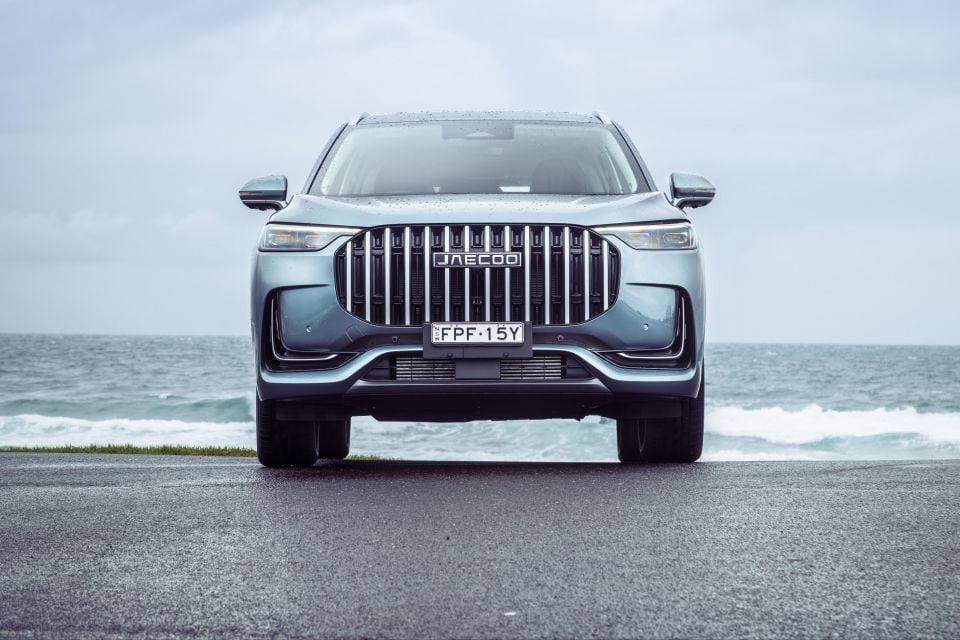
| Model | Drive-away pricing |
|---|---|
| 2025 Jaecoo J8 Track 2WD | $49,990 |
| 2025 Jaecoo J8 Ridge AWD | $54,990 |
The J8, therefore, is priced more in line with mid-range mid-size SUVs. However, MG has launched its larger, three-row QS large SUV with a base price of $46,990 drive-away.
Buy your new car without the stress. It's fast, simple and completely free.
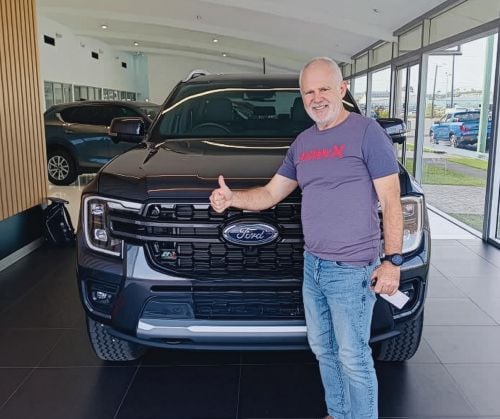
Great service from Travis and team, second time I have used this business would not hesitate to recommend them to anyone
Craig C.
Purchased a Ford Ranger in Sunshine Coast, QLD
CarExpert helped Craig save $7,224 on his Ford Ranger, now let us save you on your next new car.
Get your BEST priceWhile some Chinese brands tend towards the austere, Chery (and by extension Omoda Jaecoo) vehicle interiors tend to make a statement with some classy touch points and design cues. The J8 is no exception.
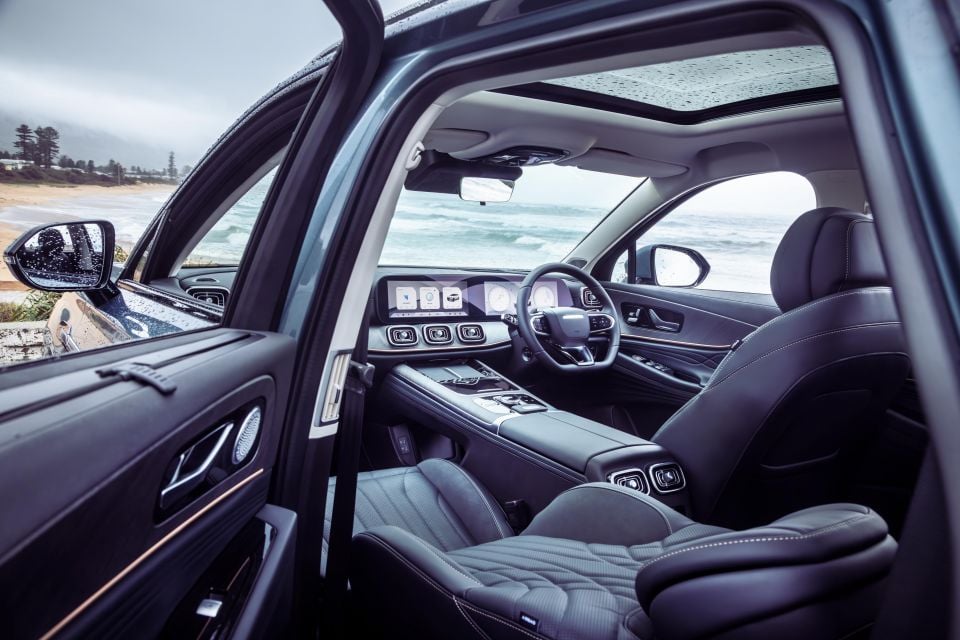
You’re immediately greeted with a cabin that’s visually interesting and which features various intriguing surfaces, instead of being some stark black prison slathered in piano black trim. That said, Omoda Jaecoo, please bring that lovely tan interior here.
There is some piano black trim, but it’s used more for accent purposes – it forms a perimeter around the window switches for example, and a little bit is used on the centre console. It is used for the steering wheel switches, though, which almost immediately look like you’re a CSI technician trying to lift fingerprints at a crime scene.
The company says the seats are real leather, and while there are some hard plastics they’re saved for the lowest reaches of the dash and doors.
There are some genuinely interesting materials in this cabin, like the swathe of grey woodgrain trim across the dash, and the dash top finished in an unusual suede-like trim. More overtly suede-like material is found on the roof and pillars in the flagship trim level.
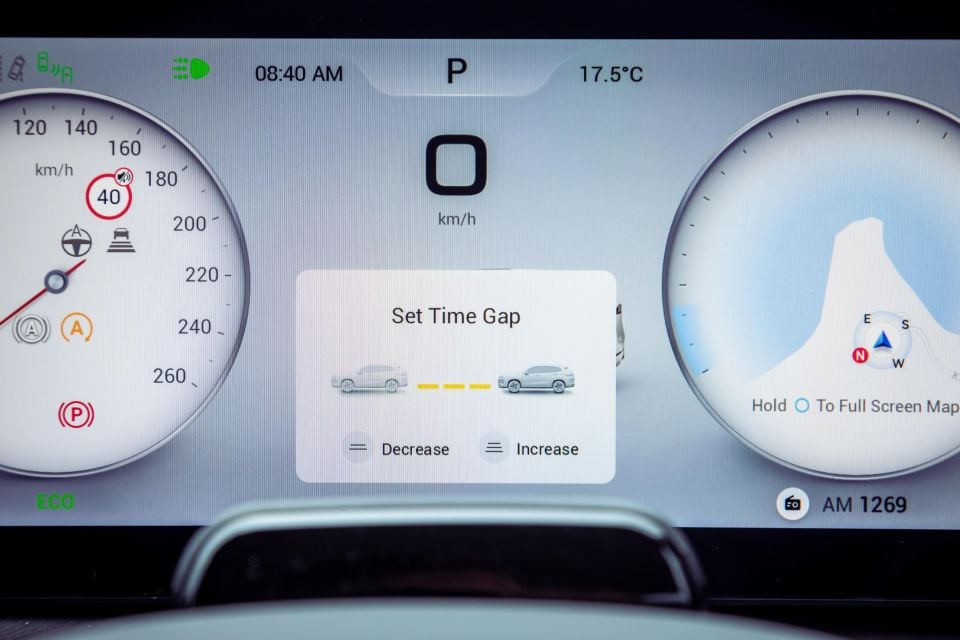
Ambient lighting in the flagship Ridge AWD makes the cabin even more luxe at night, and you can specify different colours for the front and rear of the cabin.
Some elements seem a little obviously inspired by other brands. The start button, column-mounted shifter stalk, and door-mounted seat controls feel blatantly Mercedes-Benz, though they also feel very nice to use.
The use of crystal trim for the drive mode selector in the flagship Ridge AWD is a vaguely Volvo-like touch, while the tactile wheel with its gloss black switchgear is rather Volkswagen. But if you’re going to take inspiration, why not look to the Europeans?
You want gadgets? The J8 has got them.
The Ridge AWD’s ambient lighting can pulsate to the music. The flagship also gets a fragrance system with a choice of three fragrances, dispersed from cartridges in the car.
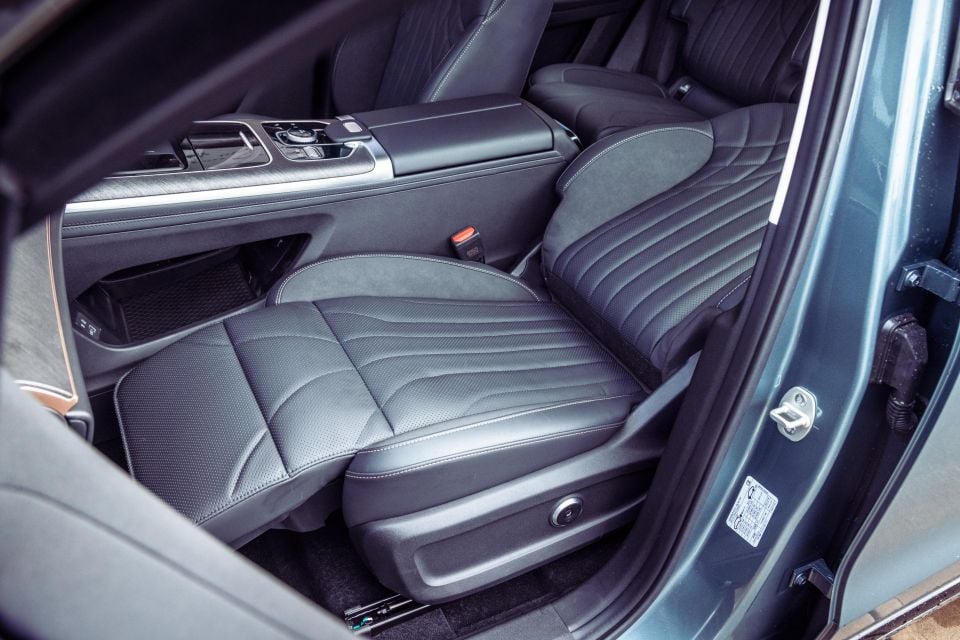
But even the base grade gets heated, ventilated and massaging front seats. The massage function is genuinely good too, with multiple levels and multiple massage types.
The driver’s seat has an extendable thigh support, while the passenger seat has a genuine leg rest. Both front seats are very comfortable.
You’ll find two speakers in the driver’s head restraint, and you can actually opt through the infotainment system for audio from calls, the embedded navigation and even media to come through only these – ideal if you don’t want to wake up dozing passengers on a long road trip. We didn’t get a chance to play around this, but it’s a clever concept.
There are some quirks in the change from left to right-hand drive. As we’ve seen in some products from Chinese rivals like GWM, the USB-A outlet for connecting to smartphone mirroring is on the passenger’s side. You won’t need it though, as there’s wireless connectivity and we were able to maintain a stable Apple CarPlay connectivity.
The voice assistant understood our prompts, but asking it to do anything with the driver’s seat saw it adjust the passenger seat instead, and vice versa. But asking the assistant to open the driver’s window opened… the driver’s window.

Also, while not a LHD to RHD quirk, it’s unusual the entry variant gets conventional interior door handles, while the Ridge AWD gets push-button ones (plus a backup mechanical release).
There are dual 12.3-inch screens, one for the instruments and one for the infotainment system. The technology is slick, which is good because there’s so little physical switchgear on the centre stack that you’re forced to use the touchscreen (or voice prompts) for almost every function.
There are some shortcuts, including a swipe-up climate control menu where you can access functions like the ventilated seats, and a swipe-down shortcut menu that you can add additional shortcuts to.
The interfaces look modern and there are some handy inclusions, like a map view for the instrument cluster and an owner’s manual on the touchscreen.
There are some physical controls, including a tactile drive mode dial, volume knob, and demister and heated seat controls, on the centre console. The latter require a double tap to activate, which prevents you from accidentally turning on the heated seats by brushing over the controls accidentally with your shirt sleeve.
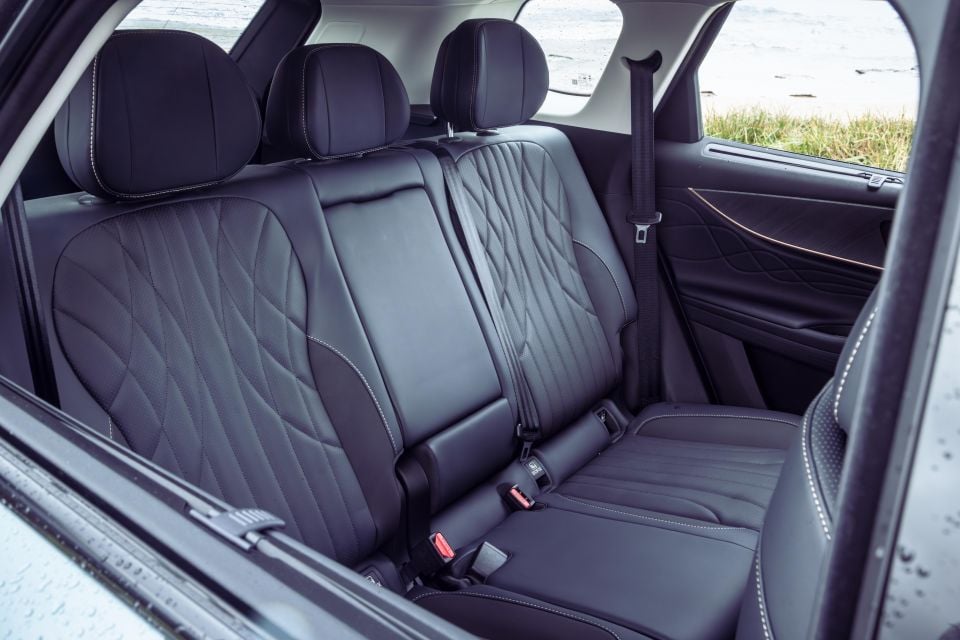
We’d like more physical controls, but this is one of the more intuitive and attractive interfaces we’ve seen in a Chinese car in 2025.
As expected, there’s a head-up display that projects information like the vehicle speed ahead of the driver.
A ventilated wireless phone charger sits on the centre console, ahead of a pair of cupholders. Underneath this there’s a large shelf, while the centre console also includes a spacious bin.
Step into the back and there’s a spacious second row. I’m 180cm tall and I had plenty of headroom, even with the panoramic sunroof, as well as ample legroom and knee room. There are also controls on the side of the front passenger seat, allowing the passenger behind to free up more room for themselves.
There are air vents not only at the rear of the centre console but also in the B-pillars. Also in the rear are map pockets, USB-A and USB-C outlets, bottle holders in the doors, cup holders in the fold-down centre armrest and, in the Ridge AWD, heated and ventilated outboard seats.
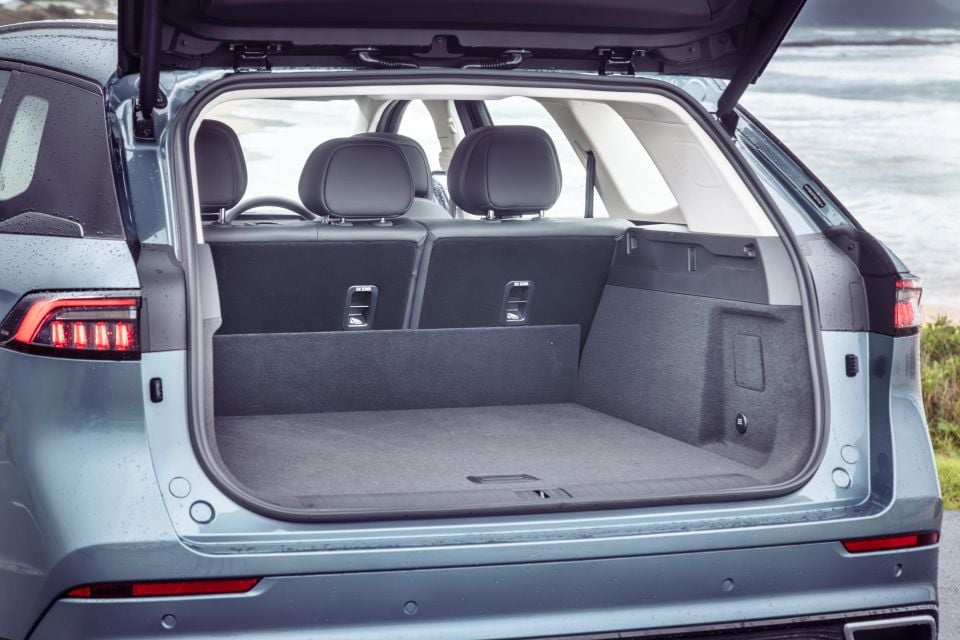

While it looks like there are only controls for the heated seats, flip a switch in the middle and these rocker switches can be used to control the ventilation function for the seats.
The boot is big, as expected for something that’s offered with a third row of seating in other markets. The company claims there’s 738L of boot space, measured up to the roof; this expands to 2021L with the rear seats folded.
Something very unusual – but most welcome – in this day and age is a full-size spare wheel under the boot floor.
| Dimensions | Jaecoo J8 |
|---|---|
| Length | 4820mm |
| Width | 1930mm |
| Height | 1710mm |
| Wheelbase | 2820mm |
| Cargo capacity | 738L (rear seats up; to roof) 2021L (rear seats folded) |
While Omoda Jaecoo wants to bring a plug-in hybrid option to Australia, for now the J8 is petrol-only.

| Specifications | Jaecoo J8 |
|---|---|
| Engine | 2.0L 4cyl turbo-petrol |
| Power | 183kW |
| Torque | 385Nm |
| Transmission | 8-speed auto |
| Drive type | Front or all-wheel drive |
| Weight | 1790-1890kg |
| Fuel economy (claimed) | 8.3L/100km (FWD) 8.6L/100km (AWD) |
| Fuel tank capacity | 65L |
| Fuel requirement | 95 octane premium unleaded |
| CO2 emissions | 197g/km (FWD) 204g/km (AWD) |
We didn’t get a chance to test combined fuel consumption. We recorded a readout of 6.8L/100km in our front-wheel drive tester across a Berry-to-Sydney highway drive, matching its highway claim.
We also recorded 8.9L/100km in a slightly more urban-skewed leg of the drive program in an all-wheel drive example.
The J8 isn’t rated to tow.
Full disclosure: our drive route from Sydney to Berry was predominantly on highways, with largely well-maintained bitumen and only a couple of genuinely winding roads featuring.

That means it was hard to properly gauge aspects like how the car handles corners, or how it soaks up craggy roads.
Throwing an all-wheel drive example around the few bends on our drive route, we observed decent body control. The steering is light but not excessively so, and Sport mode dials in some extra artificial weight.
This means the J8 doesn’t feel completely outsmarted by a corner, but again we need to spend some more time with the vehicle to get a proper gauge on its handling.
Likewise, the ride quality. Some expansion joints and ruts on Sydney roads weren’t absorbed as adeptly as they ought to be in something intended to be a plush cruiser, but on the few regional roads we drove on that weren’t well-surfaced, the J8 did a good job keeping us isolated from the nasties on the bitumen.
Given most of our drive route was on the highway, we have far more observations here – and not all of them are good.
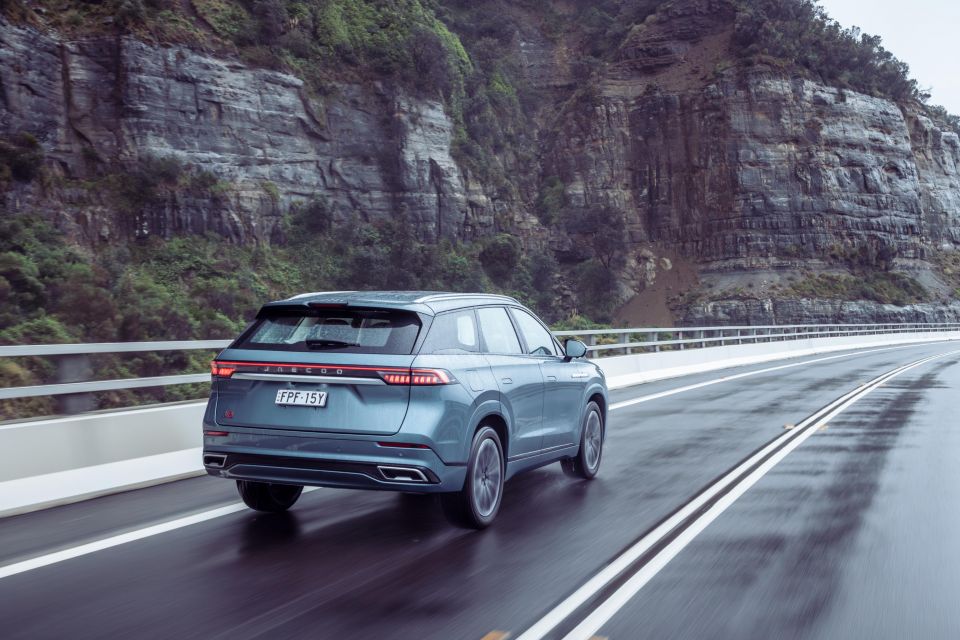
The J8 is quiet, with wind noise kept to a minimum. Give it some beans, for example to overtake, and the engine note is a touch coarse for something intended to be luxurious.
I was pleased to hear the J8 uses a torque-converter auto rather than a dual-clutch, something that has become du jour among Chinese SUVs and which in some instances can be unpleasant around town.
Unfortunately, the J8’s transmission isn’t a terribly good one.
This isn’t a light car at up to 1890kg, but with 183kW and 385Nm we expected the J8 to feel a bit more sprightly. But steeper grades or overtaking manoeuvres had the J8 dropping back several gears to muster up the grunt to push past, and the transmission generally proved to be a bit dozy.
It shuffles through gears a bit – you’ll notice this as the current gear is displayed on the instrument cluster – and isn’t as smooth as transmissions in some rival vehicles.
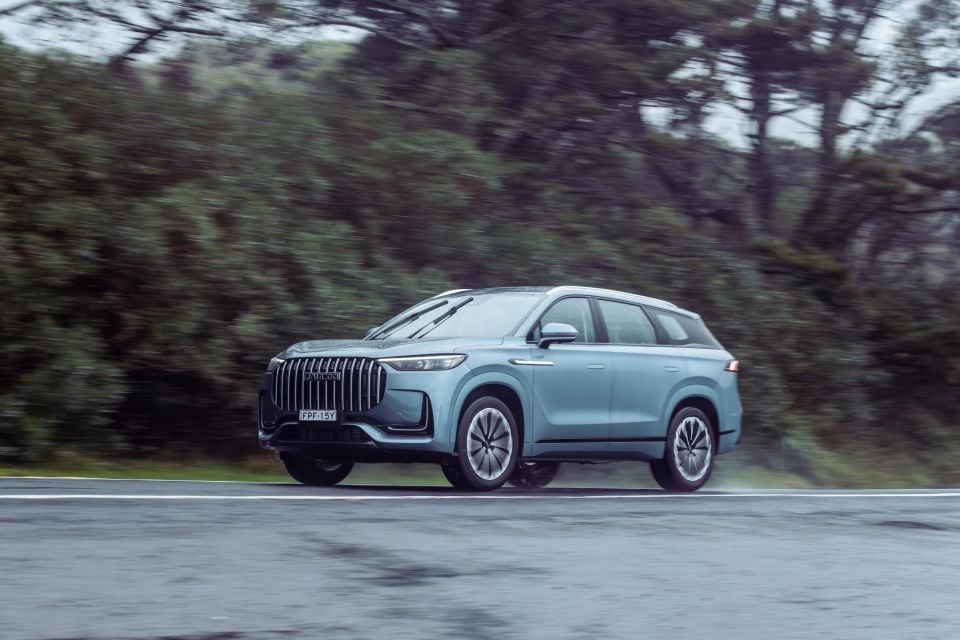
Where expert car reviews meet expert car buying – CarExpert gives you trusted advice, personalised service and real savings on your next new car.
There is a Sport mode where gears are held a bit longer and the steering gets a bit heavier, but it doesn’t make the vehicle really feel any quicker.
We drove a front-wheel drive example as well, but this drive route was even more highway-centric.
For most buyers, the J8 has adequate power. But with these outputs and a traditional auto, I was expecting a bit more grunt and refinement.
There are four different lane systems in the J8: a simple lane departure warning, an emergency lane-keep assist, lane departure prevention (what most brands would call lane-keep assist), and Traffic Jam Assist and Integrated Cruise Assist (TJA and ICA).
Okay, that looks like five, but the last two are effectively the same system just operating at different vehicle speeds. These feature lane centring in conjunction with the adaptive cruise control.

The lane departure prevention is tolerable. There’s a bit of a snatchy feeling when you get close to a lane marking, but the system doesn’t feel like it’s constantly trying to intervene. It’s not as smooth as many rival brands, however, and we couldn’t help but notice it was turned off in all the press cars… It’s a relief, then, that once turned off, this system defaults to off.
The TJA/ICA system doesn’t seem to know what it’s doing. You have to have your hands on the wheel, naturally, but as soon as it detects you seemingly breathing on the steering wheel, let alone moving it, it flashes up a warning message.
The abrupt, snatchy feeling with the lane-keep assist is exacerbated here, and it took a few kilometres of highway driving before I turned off the system in a huff.
In contrast, other driver assist features like the blind-spot monitoring, adaptive cruise control, and driver attention monitoring worked faultlessly.
Gone are the days – I say that like it was so long ago, but it was only 2023 – when Chery’s driver-facing camera would scold you incessantly, and that’s a huge relief.

The camera quality is superb, with a surround-view camera featuring an under-car view and a 3D view.
There’s also an automated parking feature which can manoeuvre the vehicle into a parking spot even if there are no defined lines, and which has a route memory function.
We’d like to have more seat time in the J8 to get a better handle on the handling and a better read on the ride.
Ultimately, however, our limited drive revealed the transmission calibration and Level 2 autonomous driving tech as the biggest bugbears.
There are two members of the Jaecoo J8 lineup.
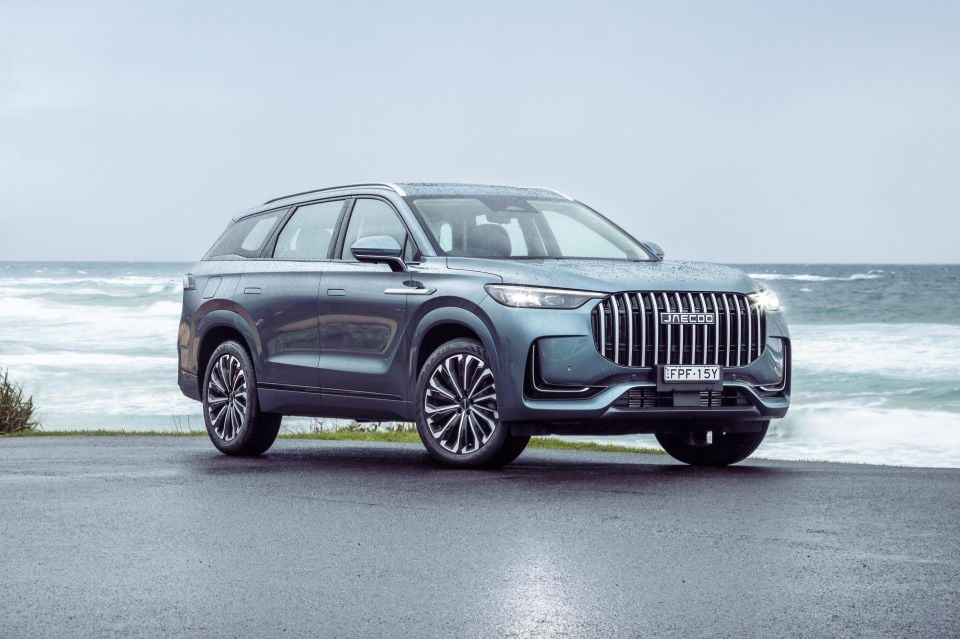
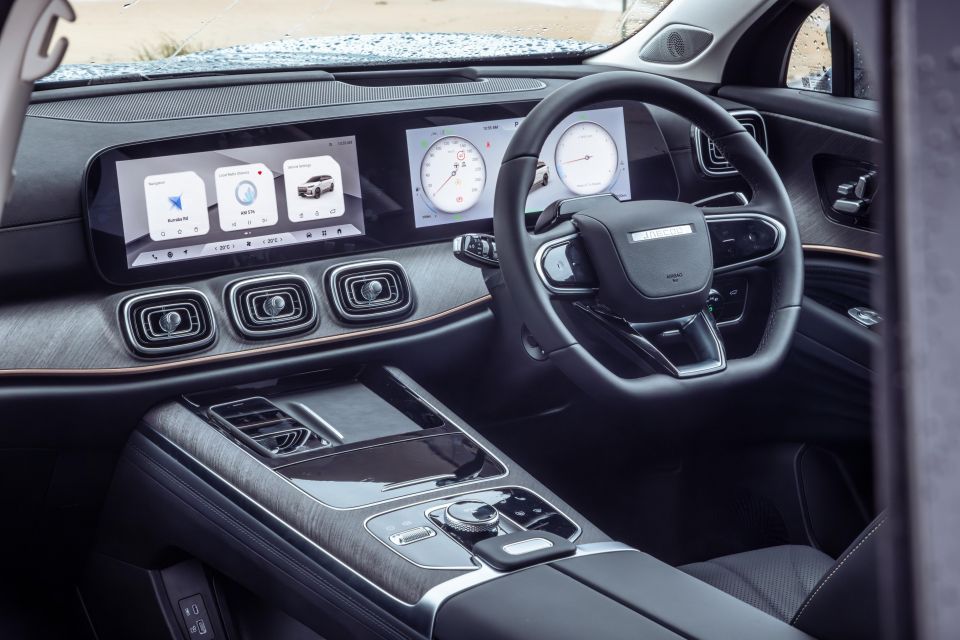
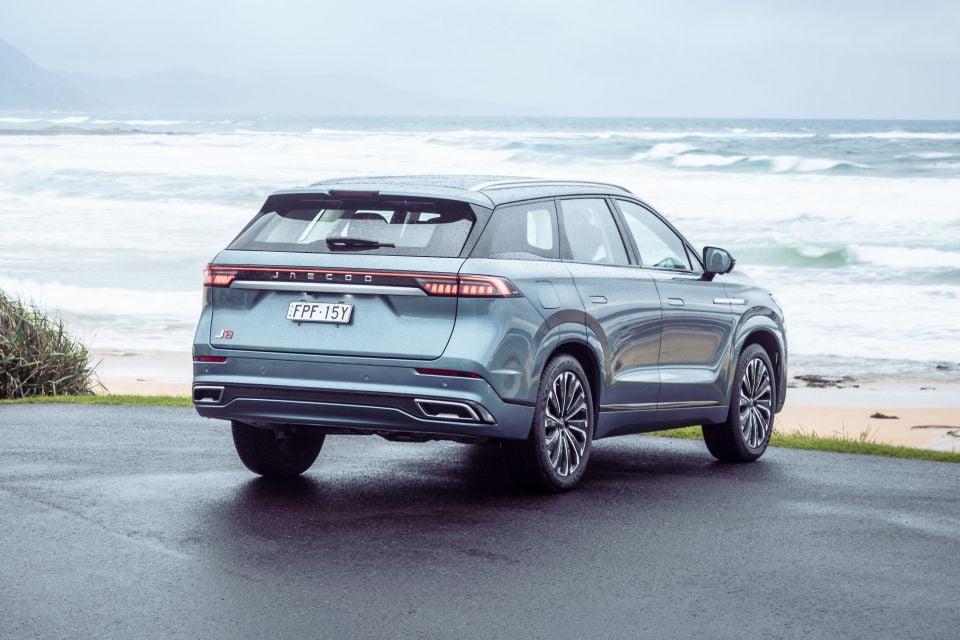
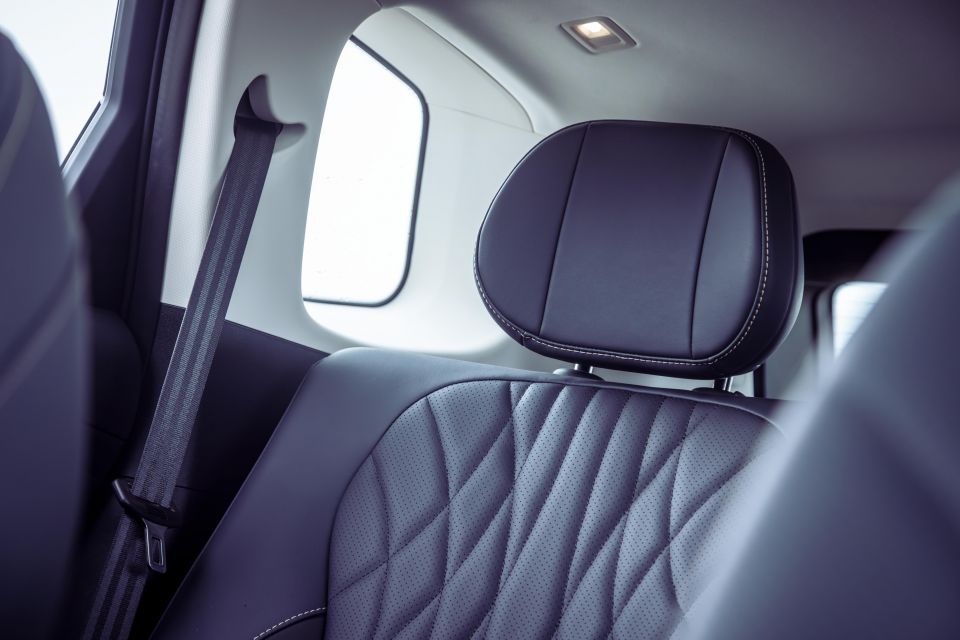
2025 Jaecoo J8 Track equipment highlights:


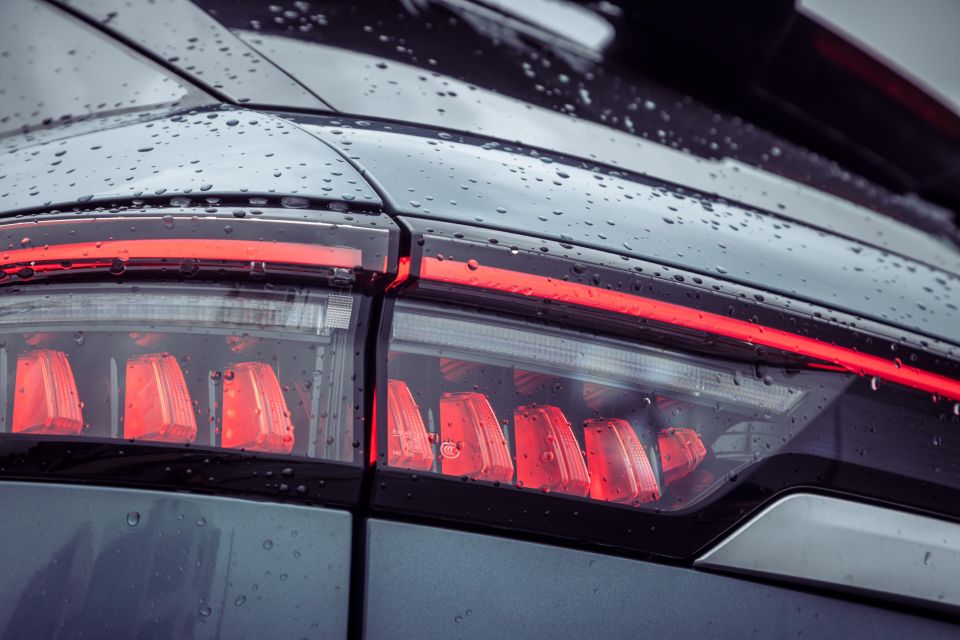

The J8 Ridge adds:
The Jaecoo J8 has yet to be tested by ANCAP or Euro NCAP.
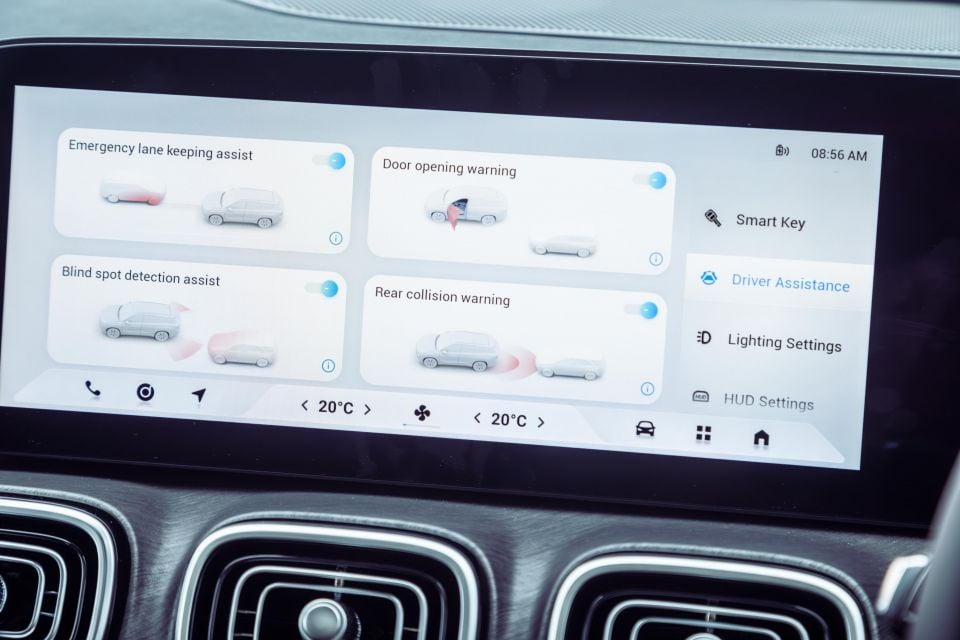
Standard safety equipment in the Jaecoo J8 includes:
The Track AWD adds:
Omoda Jaecoo vehicles offer an extra year of warranty coverage over Chery-branded vehicles.
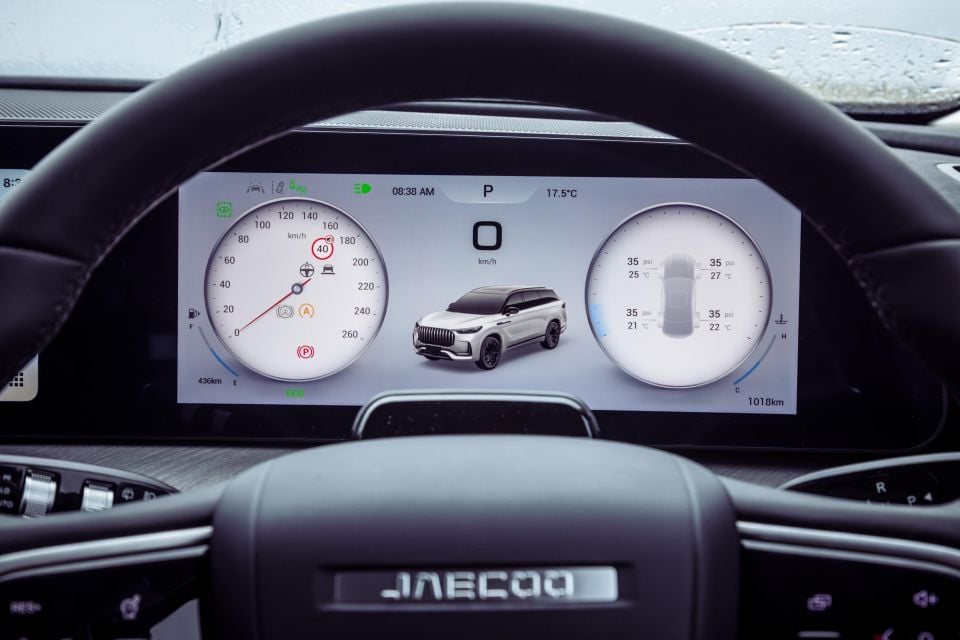
| Servicing and Warranty | Jaecoo J8 FWD | Jaecoo J8 AWD |
|---|---|---|
| Warranty | 8 years, unlimited kms | 8 years, unlimited kms |
| Roadside assistance | 8 years (service-activated) | 8 years (service-activated) |
| Service intervals | 12 months or 15,000km | 12 months or 15,000km |
| Capped-price servicing | 8 years | 8 years |
| Total capped-price service cost | $2952 | $3452 |
Buy your new car without the stress. It's fast, simple and completely free.

Great service from Travis and team, second time I have used this business would not hesitate to recommend them to anyone
Craig C.
Purchased a Ford Ranger in Sunshine Coast, QLD
CarExpert helped Craig save $7,224 on his Ford Ranger, now let us save you on your next new car.
Get your BEST priceChery has gotten quite good at designing vehicles with a lot of showroom appeal, offering slick technology, a swag of creature comforts, modern design, and plenty of interesting materials and controls.
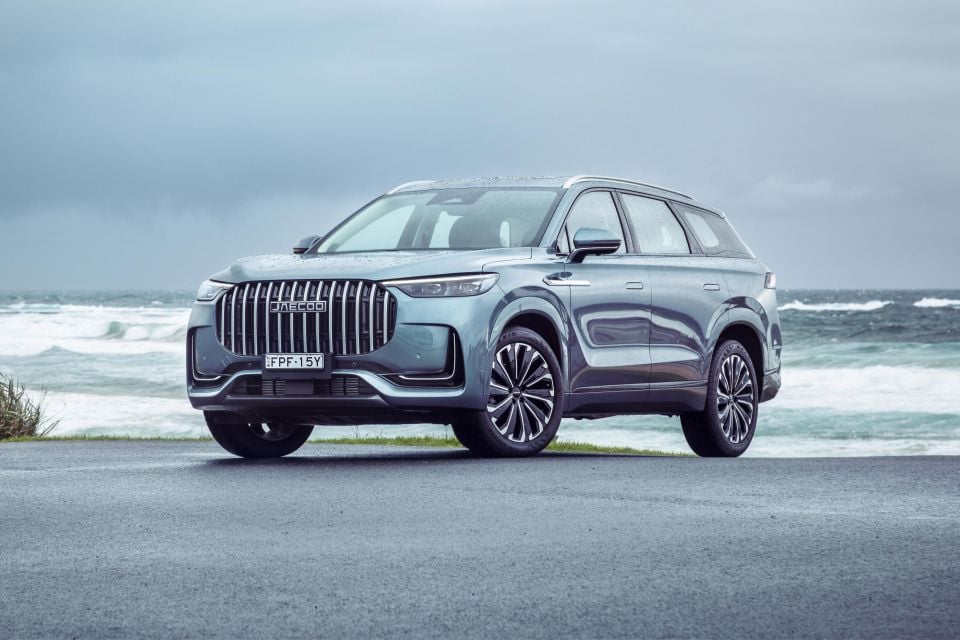
So, naturally, the flagship vehicle from its quasi-premium Omoda Jaecoo arm naturally looks terrific at first glance.
For the price of a mid-spec mid-sizer, you get a large SUV absolutely loaded with kit, with a high-tech, well-appointed and attractive interior.
Unfortunately, while the J8 offers a long list of standard active safety and driver assist technology, not all of it works well.
While the spec sheet looks good with features like adaptive suspension, torque vectoring all-wheel drive and a turbocharged engine, our limited drive time revealed some limitations.

We need to spend more time with the J8 across a variety of different driving environments to give you a more detailed conclusion. But our initial impressions are that for an undemanding driver seeking a spacious, well-equipped SUV, the J8 is terrific value for money.
Rivals from Korea, Japan and Europe should ignore Chery at their peril. The Chinese automaker is marching upmarket, and in around two years in our market it feels like it is now where, say, Hyundai was at here after close to 10.
The difference between a fully loaded Hyundai Sonata Levant from the mid-1990s and this, however, is the presentation. This isn’t just a lot of metal and features for a sharp price, masked in inoffensive styling.
Instead, the Jaecoo J8 has a really slick look to everything from its screens to its material selection and its exterior styling. And that may be enough for buyers to overlook some of its deficiencies.
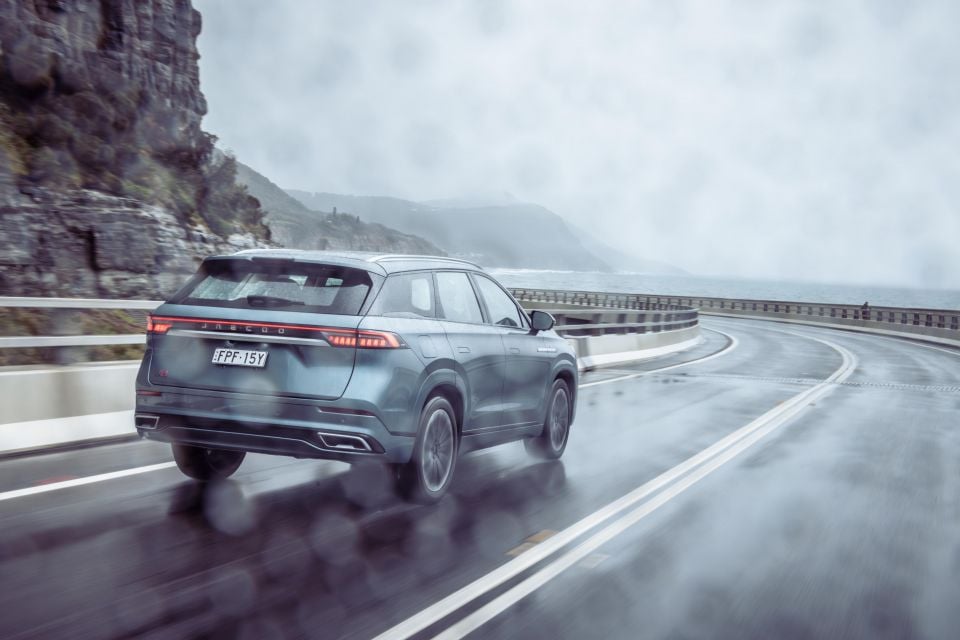
Click the images for the full gallery
MORE: Everything Jaceoo
Where expert car reviews meet expert car buying – CarExpert gives you trusted advice, personalised service and real savings on your next new car.
William Stopford is an automotive journalist based in Brisbane, Australia. William is a Business/Journalism graduate from the Queensland University of Technology who loves to travel, briefly lived in the US, and has a particular interest in the American car industry.


James Wong
5 Days Ago
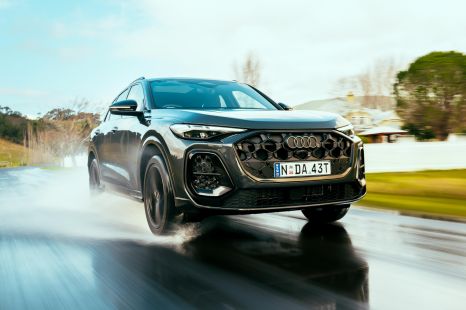

James Wong
4 Days Ago
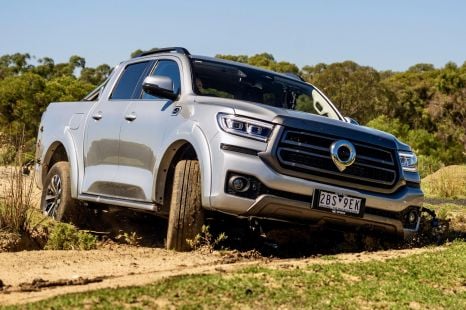

Max Davies
3 Days Ago
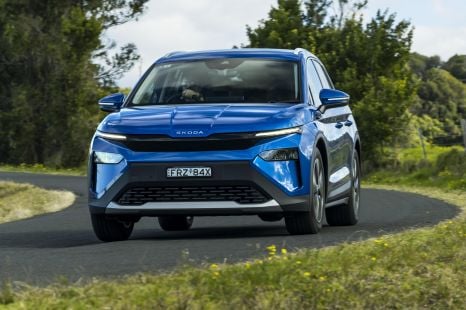

Josh Nevett
2 Days Ago
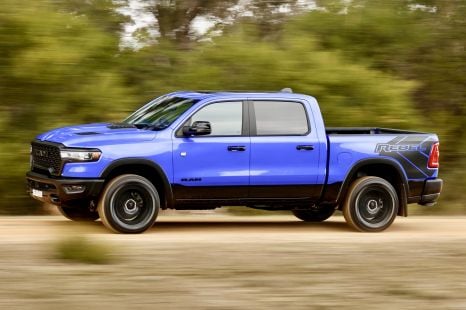

Max Davies
2 Days Ago
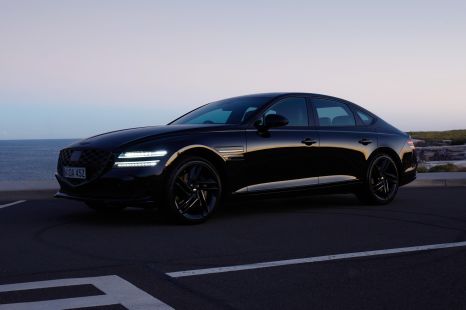

William Stopford
20 Hours Ago